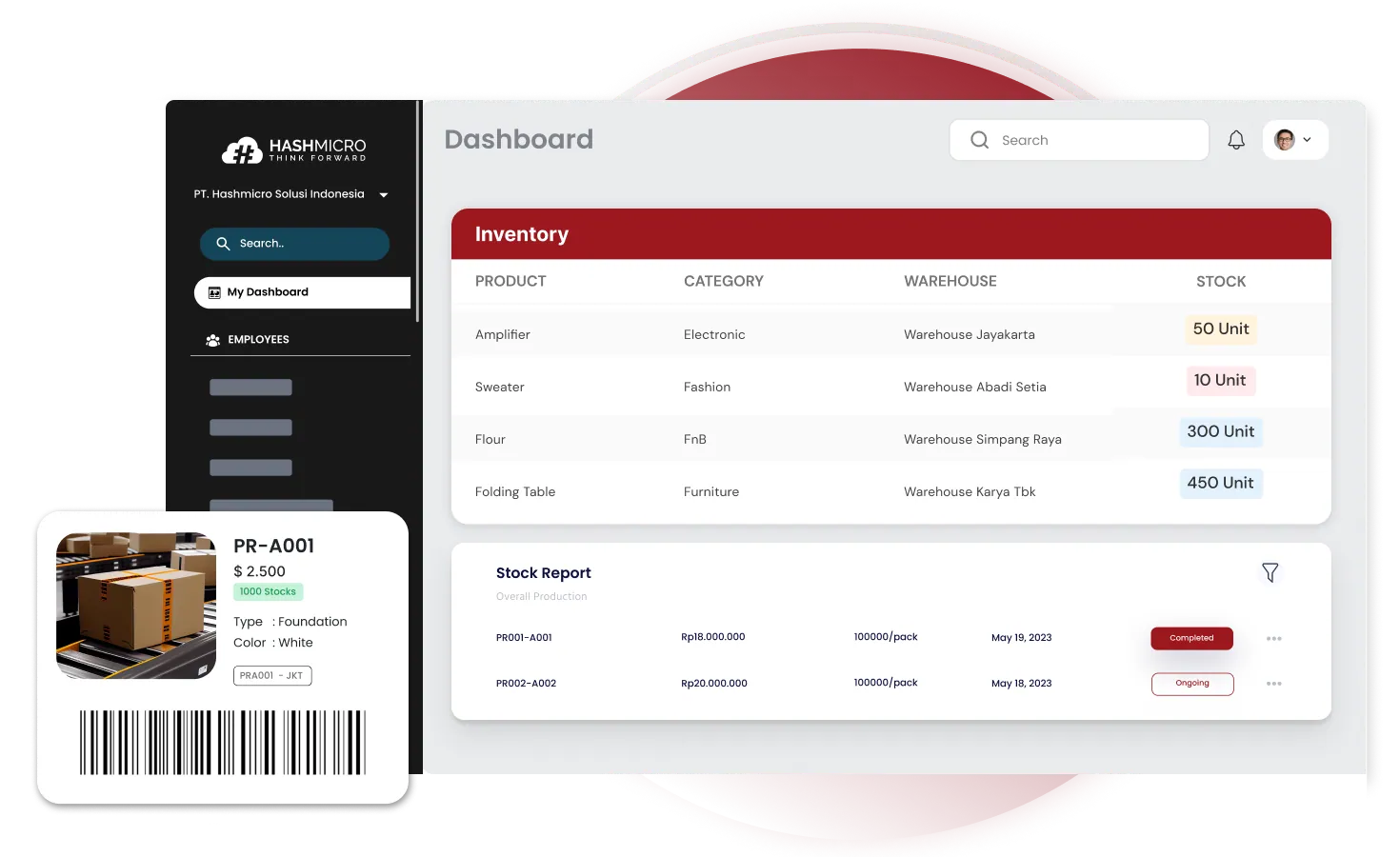You might think product quality guarantees success, but without the right distribution, it will fail. Many businesses in the Philippines focus too much on product development and forget that getting those products into customers’ hands is just as important. Don’t let your product go unnoticed because of a poor distribution strategy.
Every successful business understands that the growth path is not just in creating a great product but in effectively delivering it. Distribution is key; without a strong plan, your product might never reach its potential.
Don’t risk your success—read on and learn how to build a strategy that ensures your product reaches the right people at the right time. Because without this, your business could fall behind your competition.
Key Takeaways
|
Table of Contents

What is a Distribution Strategy?

A distribution strategy is a detailed plan that identifies the best methods and channels to ensure products are delivered efficiently, cost-effectively, and aligned with business goals. This involves careful planning, which includes selecting distribution partners, setting up warehousing, and ensuring proper transportation logistics.
In essence, a distribution strategy is not only about getting products from point A to point B—it’s about ensuring that products are delivered optimally. This means considering factors like timing, cost, and resource availability.
A well-planned strategy ensures that your product arrives where and when needed, whether in a local sari-sari store or a major retail chain. It helps businesses maintain control over their supply chain, meet customer expectations, and, ultimately, drive growth through an effective distribution management system.
Why is Distribution Strategy Important?
A strong distribution strategy is essential for expanding your business and maximizing your market reach. Without an effective plan, products might not reach customers on time, leading to missed sales and lost trust. In business, a well-defined strategy helps ensure consistent product availability, which is critical in building customer loyalty.
Moreover, the right strategy helps you manage resources efficiently, from warehousing to logistics. By understanding where your customers are and how they prefer to buy, you can tailor your distribution efforts to improve overall profitability. A solid distribution strategy is no longer an option; it’s a must.
Factors to Consider When Planning a Distribution Strategy
Filipino business owners need to consider several key factors when planning a distribution strategy. Each factor shapes how efficiently and effectively their products reach consumers, impacting customer satisfaction and overall business success.
| Product Type |
|---|
|
The nature of the product you’re distributing significantly affects your distribution strategy. Perishable goods, for instance, require quick delivery, while electronics may need specialized storage solutions. Digital goods can be delivered instantly online, but physical products require more detailed packaging, transportation, and storage planning. Understanding your product’s characteristics is essential in selecting the right distribution channels. |
| Customer Base |
|
Your customer base influences how and where you distribute your products. Filipino consumers vary in their shopping preferences, with some leaning toward online purchases while others still prefer in-store experiences. Tailoring your strategy to meet your customer’s needs, including addressing regional differences such as infrastructure challenges in rural areas versus high demand in urban centers, will improve customer satisfaction and encourage repeat purchases. |
| Warehouse and Transportation Logistics |
|
Warehousing and logistics are critical to the efficiency of your distribution strategy. A strategically located warehouse helps reduce delivery times and costs, enabling you to better manage inventory and serve customers promptly. Given the transportation infrastructure challenges in the Philippines, it’s vital to partner with a logistics provider that understands local conditions and can help optimize delivery routes. |
By carefully considering these factors—product type, customer base, and logistics—you can create a robust distribution strategy that meets your market’s demands and supports long-term growth and success in the competitive Filipino business landscape.

Types of Distribution Strategies
When it comes to distributing products, businesses have various strategies to choose from based on their goals and target audience. Each distribution strategy offers unique benefits and challenges, particularly for Filipino business owners looking to expand their market presence while managing costs and customer satisfaction.
Here are some of the main types of distribution strategies businesses can adopt:
| Distribution Method | Description |
|---|---|
| Direct Distribution | Sell directly to consumers without intermediaries, giving full control over the customer experience. Requires investment in sales teams or online platforms, but with rising e-commerce, this is increasingly viable. |
| Indirect Distribution | Use intermediaries like wholesalers or retailers to reach more customers. This expands reach but limits control over pricing and customer interactions. |
| Intensive Distribution | Maximize availability through multiple channels. Common for FMCG like food products, it ensures visibility but requires strong coordination across outlets. |
| Selective Distribution | Partner with specific retailers to maintain control over product placement. This is ideal for luxury or niche products, enhancing exclusivity and value. |
| Exclusive Distribution | Limit distributors to one or a few, often for high-end products. This boosts brand prestige but reduces overall market access. |
| Hybrid Distribution | Combine direct and indirect channels to reach different customer segments. This is flexible and works well in the Philippines, where consumer preferences vary. |
| Omnichannel Distribution | Integrate online and offline sales for a seamless customer experience. Essential in the Philippines’ growing e-commerce market, this approach boosts customer loyalty through convenience. |
By understanding these different distribution strategies, Filipino business owners can choose the approach that best fits their products, target markets, and growth objectives. The right strategy will ensure products are available where and when customers need them while supporting long-term business success.
What are Distribution Channels?
When choosing how to distribute products, businesses must consider the various channels available to them. Each channel offers distinct benefits and can be suited to different business goals. Understanding these channels allows Filipino business owners to choose the best approach for efficiently reaching their target market.
- Wholesale: Wholesale involves selling large quantities of products to intermediaries, such as retailers or distributors, who then resell to consumers. For businesses in the Philippines, wholesale is an effective way to distribute products quickly to a wide audience.
- Retail: Retail distribution is the direct sale of products to customers through physical stores or online platforms. In the Philippines, retailers act as the bridge between manufacturers and consumers, offering personalized services that improve customer satisfaction.
- Distributors: Distributors manage logistics and stock levels while also handling marketing, making them an essential link between manufacturers and retailers or customers. Many Filipino businesses rely on distributors to efficiently move products across regions.
- Franchisors: Franchisors enable other businesses to distribute their products under franchise agreements. This model is particularly popular in the Philippines, especially in the fast food, retail, and service industries, as it allows rapid expansion while maintaining brand consistency.
By leveraging these distribution channels, Filipino businesses can optimize their supply chains and improve product availability, ultimately supporting business growth and customer satisfaction.
Advanced Distribution Technology
This technology is vital for improving business strategies in today’s fast-paced market. By integrating automation, AI, and data analytics, companies can streamline their supply chain and distribution processes, operate more efficiently, reduce costs, and quickly respond to consumer demands.
Supply chain software is crucial for providing real-time tracking, allowing businesses to consistently monitor shipments. This proactive approach helps anticipate delays and adjust logistics plans, minimizing disruptions. Consequently, companies can strengthen customer relationships and trust by ensuring reliable product delivery.
Additionally, advanced software enhances distributor coordination and warehouse management. Businesses can maintain optimal stock levels, ensuring products are available when needed. This combination of technology and strategic planning empowers Filipino businesses to meet evolving market demands and gain a competitive edge.
Examples of Distribution Strategies
Examining real-world examples can provide valuable insights into effective distribution strategies. Different industries and business models require tailored strategies to meet their unique needs.
Here are three examples that illustrate how companies could implement various distribution strategies:
- Example 1: A Fast-Moving Consumer Goods Company: FMCG companies, like toothpaste brands, often use intensive distribution strategies. They achieve high visibility and market penetration by ensuring their products are available in convenience stores nationwide.
- Example 2: A Luxury Fashion Brand: Luxury fashion brands typically employ exclusive distribution strategies, partnering with select high-end stores. In the Philippines, this maintains exclusivity and enhances brand prestige among affluent consumers.
- Example 3: A Local Services Business: Small service businesses, such as local repair shops, often adopt hybrid distribution models. By offering in-store services and online appointment scheduling, they can reach a broader customer base while providing personalized service.
By analyzing these examples, Filipino business owners can better understand how to implement effective distribution strategies tailored to their specific market and customer needs. Each strategy demonstrates the importance of aligning distribution methods with business goals to drive success.
HashMicro’s Distribution Software to Automate Distribution Strategy Creation

Our software is designed to automate the creation of effective distribution strategies for businesses. HashMicro’s distribution software streamlines operations and enhances efficiency, allowing companies to focus on growth and customer satisfaction.
By leveraging advanced features, businesses can optimize their distribution processes and seamlessly adapt to changing market demands. Some of those features are:
- Cash Flow Optimization: Efficiently creates and sends invoices, improving cash management and financial flow.
- Digitalization Procurement Activities: Enhance the efficiency of procurement processes, making sourcing and ordering more streamlined.
- Thorough Inventory Control: Monitor and track stock levels in real-time to ensure products are always available when needed.
- Efficient HR Administration: Automate time-consuming administrative tasks, allowing teams to focus on more strategic activities.
- Easy Report Generation: Simplify the generation of various reports, aiding in data analysis and decision-making.
Using HashMicro’s distribution software, among many distribution software available, Filipino businesses can create automated and effective distribution strategies that enhance operational efficiency and improve overall performance.
Conclusion
A robust distribution strategy is crucial for success in the Philippine market today. While product quality matters, it isn’t sufficient alone to drive sales. A well-defined distribution strategy ensures that products reach consumers efficiently and effectively, fostering growth and loyalty.
Business owners can tailor their approach to meet unique market needs by understanding different distribution methods and channels. Advanced technologies, like HashMicro’s distribution software, enhance these efforts by automating processes and optimizing inventory management.
Don’t leave your business’s success to chance—take the next step in creating effective distribution strategies. Sign up for our free demo today to transform your operations. Start optimizing your distribution processes now to ensure your products reach the right customers at the right time!
Frequently Asked Questions
-
What is the distribution strategy?
A distribution strategy outlines how a business delivers its products to customers efficiently and cost-effectively. It includes selecting the best channels and methods to ensure products reach the target market.
-
What is an example of a place and distribution strategy?
An example is a fast-moving consumer goods (FMCG) company using intensive distribution by placing products in convenience stores. This strategy ensures high visibility and consumer accessibility, increasing sales and market penetration.
-
How to choose a distribution strategy?
To choose a distribution strategy, analyze your product type, target customer preferences, and market conditions. Consider cost, control, and logistics to select the most effective channels for reaching your audience.




































